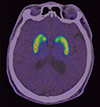1. Garver WS, Francis GA, Jelinek D, Shepherd G, Flynn J, Castro G, Walsh Vockley C, Coppock DL, Pettit KM, Heidenreich RA, et al. The National Niemann-Pick C1 disease database: report of clinical features and health problems. Am J Med Genet A. 2007; 143A:1204–1211.
2. Imrie J, Dasgupta S, Besley GT, Harris C, Heptinstall L, Knight S, Vanier MT, Fensom AH, Ward C, Jacklin E, et al. The natural history of Niemann-Pick disease type C in the UK. J Inherit Metab Dis. 2007; 30:51–59.
3. McKay Bounford K, Gissen P. Genetic and laboratory diagnostic approach in Niemann Pick disease type C. J Neurol. 2014; 261:Suppl 2. S569–S575.
4. Chang TY, Reid PC, Sugii S, Ohgami N, Cruz JC, Chang CC. Niemann-Pick type C disease and intracellular cholesterol trafficking. J Biol Chem. 2005; 280:20917–20920.
5. Vanier MT. Lipid changes in Niemann-Pick disease type C brain: personal experience and review of the literature. Neurochem Res. 1999; 24:481–489.
6. Vanier MT. Niemann-Pick disease type C. Orphanet J Rare Dis. 2010; 5:16.
7. Patterson MC, Hendriksz CJ, Walterfang M, Sedel F, Vanier MT, Wijburg F; NP-C Guidelines Working Group. Recommendations for the diagnosis and management of Niemann-Pick disease type C: an update. Mol Genet Metab. 2012; 106:330–344.
8. Scott C, Ioannou YA. The NPC1 protein: structure implies function. Biochim Biophys Acta. 2004; 1685:8–13.
9. Gartin BC, Murdick NL, Cooley J, Barnett S. Teaching children with Niemann-Pick disease. Phys Disabil. 2013; 32:30–42. [i-iii.].
10. Jeong MH, Ko JM, Kim GH, Yoo HW. Molecular diagnosis of Niemann-Pick type C presenting with neonatal cholestasis and hepatosplenomegaly. J Genet Med. 2007; 4:200–3.
11. Vanier MT. Phenotypic and genetic heterogeneity in Niemann-Pick disease type C: current knowledge and practical implications. Wien Klin Wochenschr. 1997; 109:68–73.
12. Patterson MC. A riddle wrapped in a mystery: understanding Niemann-Pick disease, type C. Neurologist. 2003; 9:301–10.
13. Sévin M, Lesca G, Baumann N, Millat G, Lyon-Caen O, Vanier MT, Sedel F. The adult form of Niemann-Pick disease type C. Brain. 2007; 130:120–33.
14. Salsano E, Umeh C, Rufa A, Pareyson D, Zee DS. Vertical supranuclear gaze palsy in Niemann-Pick type C disease. Neurol Sci. 2012; 33:1225–32.
15. Wijburg FA, Sedel F, Pineda M, Hendriksz CJ, Fahey M, Walterfang M, Patterson MC, Wraith JE, Kolb SA. Development of a suspicion index to aid diagnosis of Niemann-Pick disease type C. Neurology. 2012; 78:1560–7.
16. Stamelou M, Quinn NP, Bhatia KP. "Atypical" atypical parkinsonism: new genetic conditions presenting with features of progressive supranuclear palsy, corticobasal degeneration, or multiple system atrophy-a diagnostic guide. Mov Disord. 2013; 28:1184–99.
17. Butters TD, Dwek RA, Platt FM. Inhibition of glycosphingolipid biosynthesis: application to lysosomal storage disorders. Chem Rev. 2000; 100:4683–96.







 PDF
PDF ePub
ePub Citation
Citation Print
Print



 XML Download
XML Download